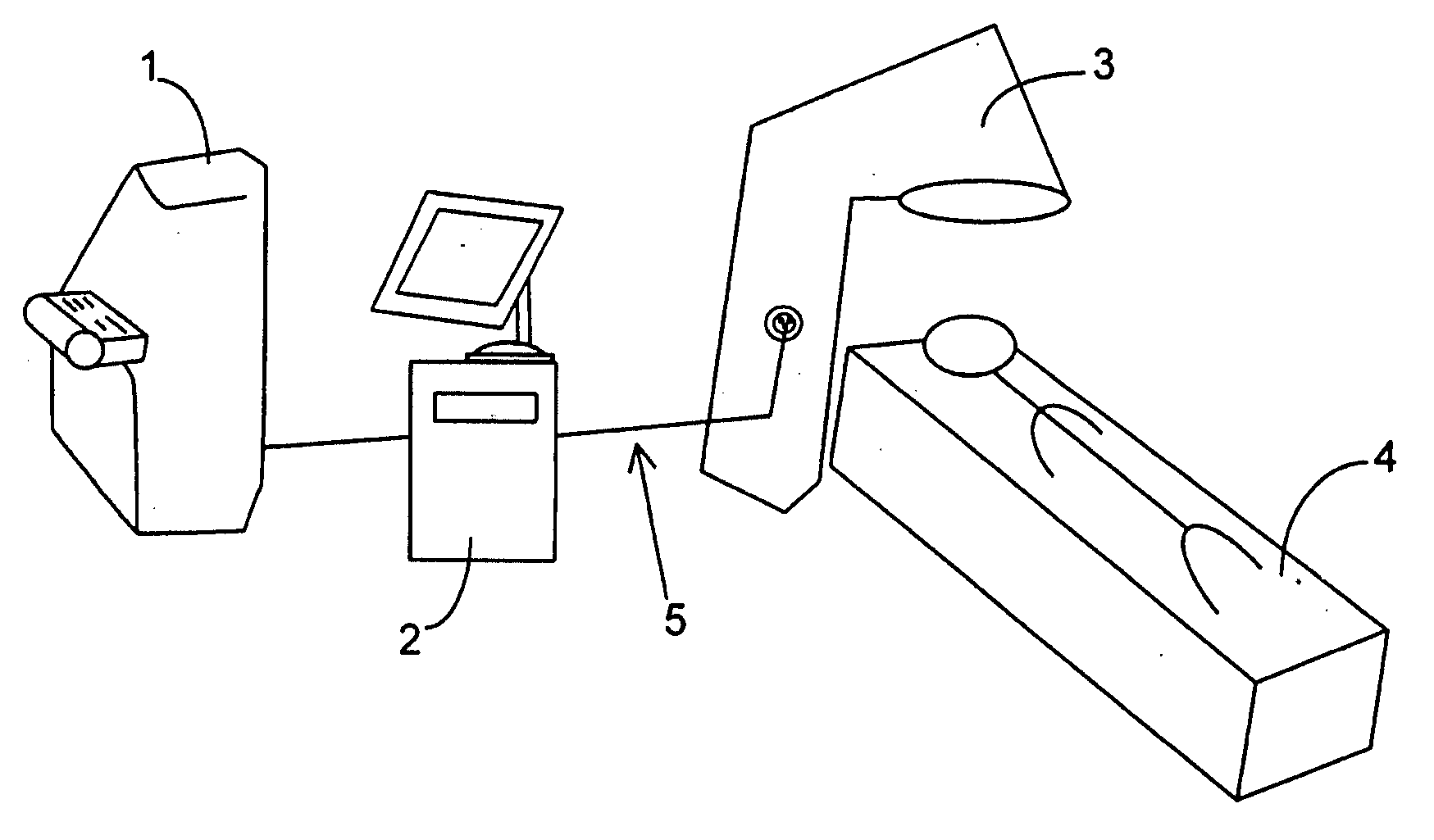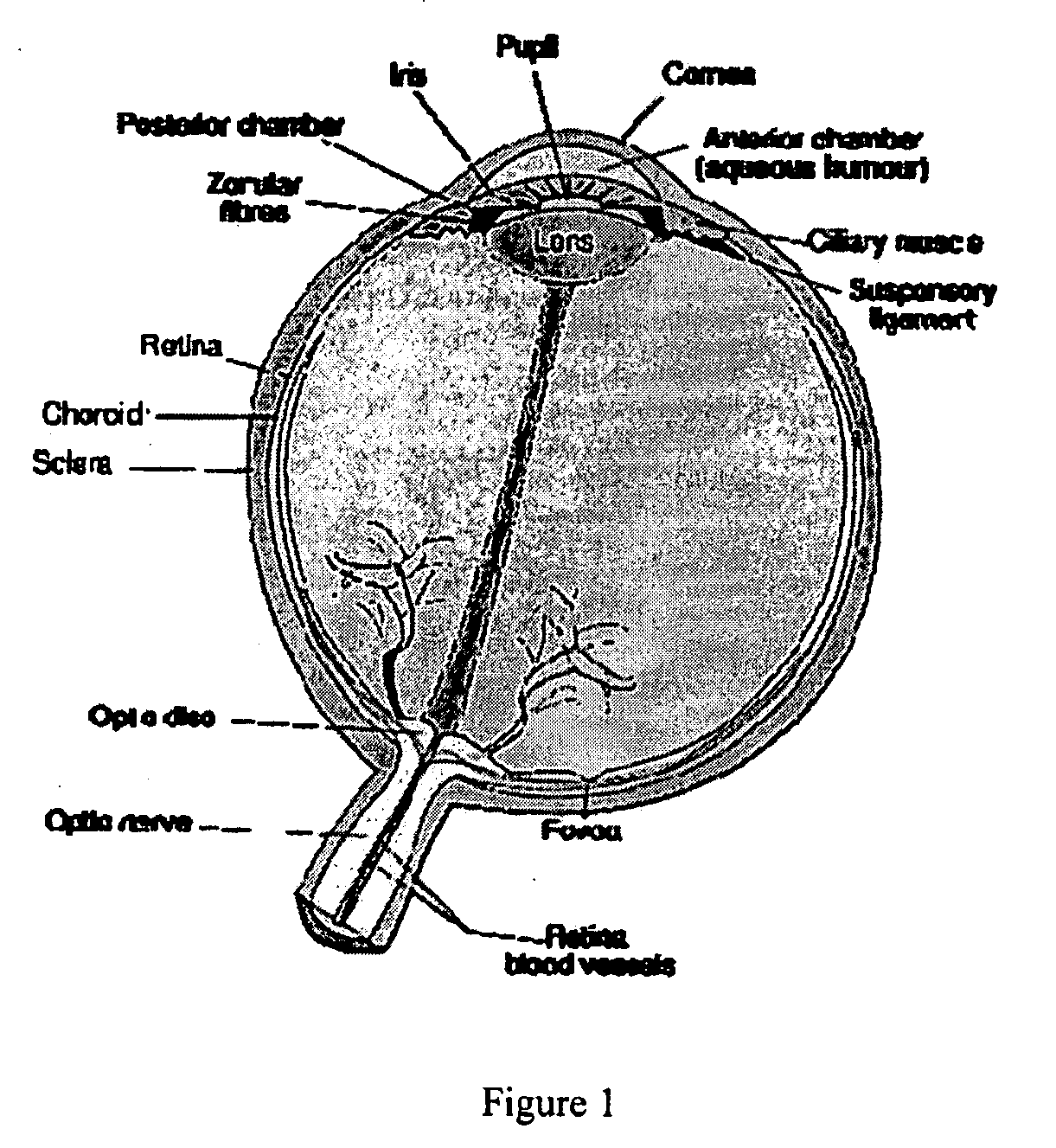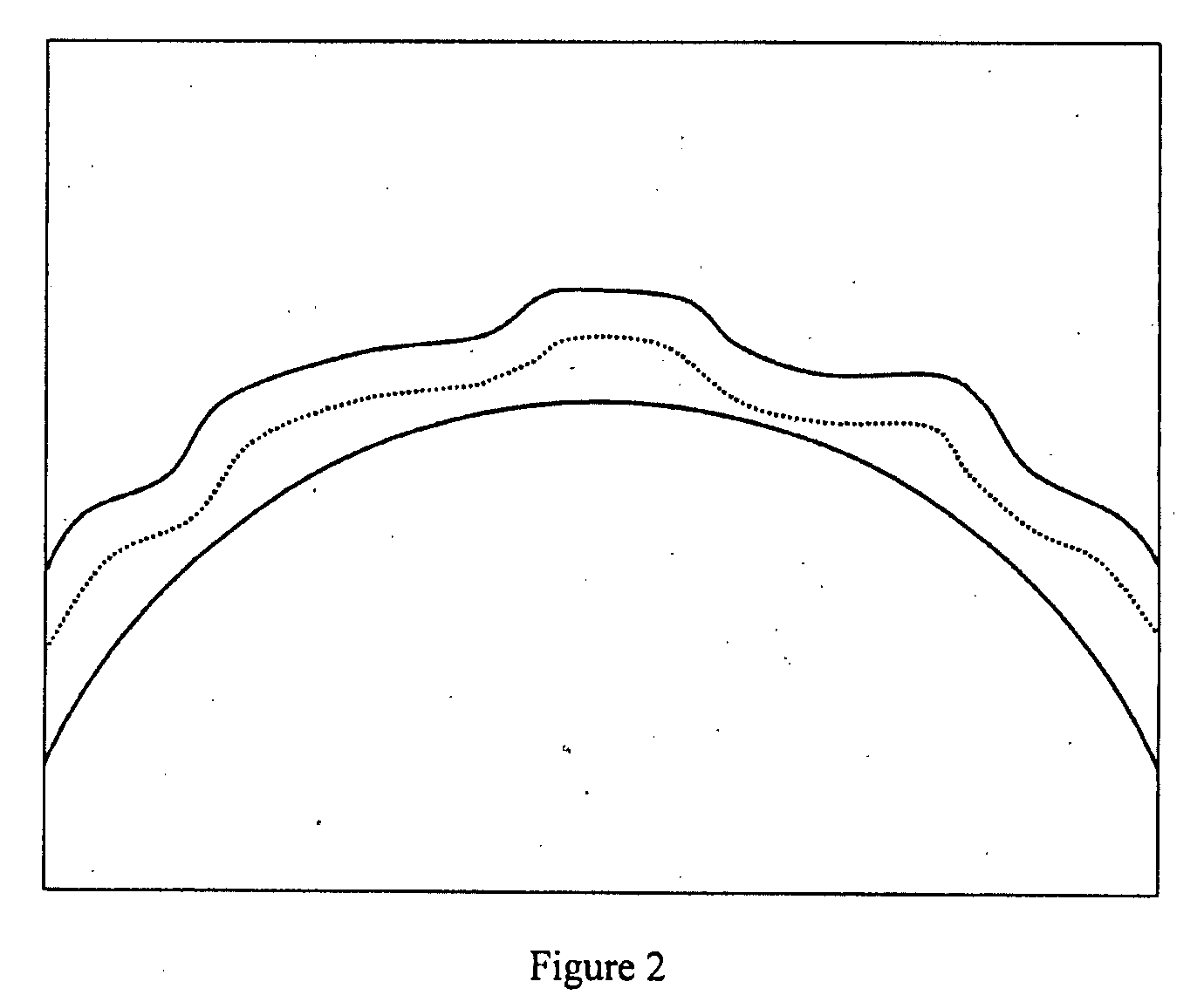Method and apparatus to guide laser corneal surgery with optical measurement
- Summary
- Abstract
- Description
- Claims
- Application Information
AI Technical Summary
Benefits of technology
Problems solved by technology
Method used
Image
Examples
examples
1. High-Speed Optical Coherence Tomography Mapping of the Cornea
OCT Image Capture
1. High-Speed OCT Scanning.
[0078] An OCT system with a speed of at least 2 kHz axial scan repetition rate is needed to accurately map corneal thickness. A speed of at least 20 kHz is needed to accurately map the anterior corneal surface elevation. An even higher speed is preferred for the mapping of highly irregular corneas because even a small movement within the scan acquisition period can lead to misregistration of a fine surface irregularity.
2. Meridional Scanning Pattern.
[0079] The strong specular reflection at the corneal vertex (the point on the corneal surface that is perpendicular to the visual fixation axis) is easily visible on the OCT image and serves as a reliable landmark. Radial lines centered on the vertex forms meridians. A meridional OCT scan has the special property that the OCT beam remains perpendicular to the corneal azimuth, and its incidence angle in the meridional plane ...
PUM
 Login to View More
Login to View More Abstract
Description
Claims
Application Information
 Login to View More
Login to View More - R&D
- Intellectual Property
- Life Sciences
- Materials
- Tech Scout
- Unparalleled Data Quality
- Higher Quality Content
- 60% Fewer Hallucinations
Browse by: Latest US Patents, China's latest patents, Technical Efficacy Thesaurus, Application Domain, Technology Topic, Popular Technical Reports.
© 2025 PatSnap. All rights reserved.Legal|Privacy policy|Modern Slavery Act Transparency Statement|Sitemap|About US| Contact US: help@patsnap.com



